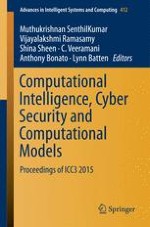This book aims at promoting high-quality research by researchers and practitioners from academia and industry at the International Conference on Computational Intelligence, Cyber Security, and Computational Models ICC3 2015 organized by PSG College of Technology, Coimbatore, India during December 17 – 19, 2015. This book enriches with innovations in broad areas of research like computational modeling, computational intelligence and cyber security. These emerging inter disciplinary research areas have helped to solve multifaceted problems and gained lot of attention in recent years. This encompasses theory and applications, to provide design, analysis and modeling of the aforementioned key areas.
